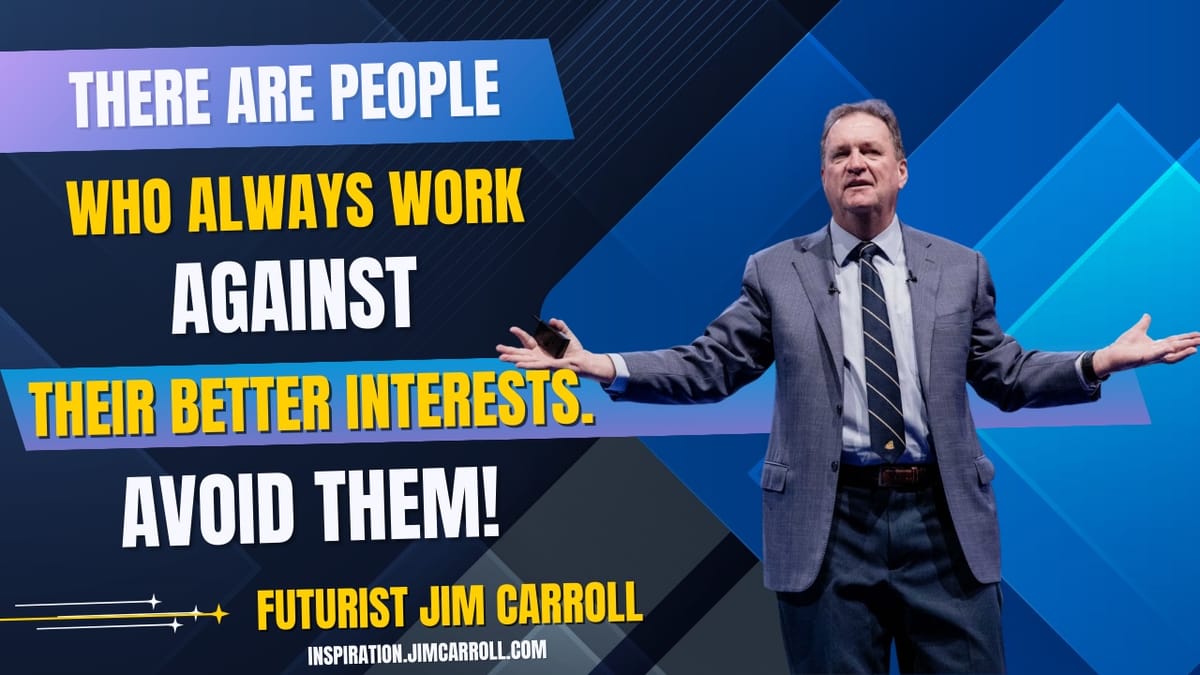"There are people who always work against their better interests. Avoid them!" - Futurist Jim Carroll
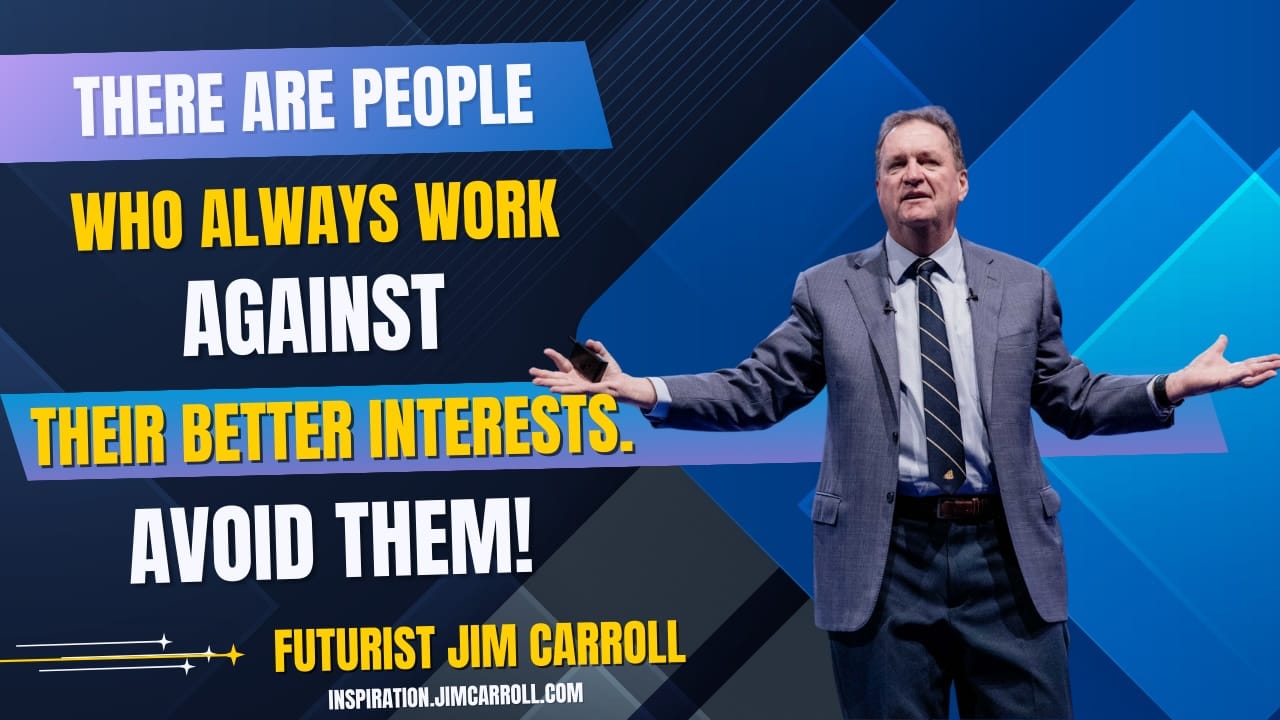
You should spend more time trying to break free from those who work against themselves.
And this isn't just about avoiding difficult people. It's about recognizing that their self-sabotage not only brings down an organization and its goals, but they also bring you down as well.
Avoid them if you can! And the best way to do that is to recognize these people for who they are:
- The individual self-saboteur: You know those people around you who say "you're not qualified" before some sort of big initiative? Those who have an impulse to perfect endlessly instead of shipping? That's personal self-sabotage driven by fear of failure, imposter syndrome, or low self-worth.
- The self-sabotaging team: Put a bunch of these people together and you've built a boat-anchor of failure. You know what happens - teams that spend more energy blaming other departments than solving problems. Groups that scapegoat one member instead of addressing real issues. This collective dysfunction kills innovation faster than any external competitor.
- The failure-is-in-our-bones organization: Spread this culture throughout the entire organization, and you've got a suicide organization. When your core competencies become barriers to embracing the future, you're in systemic self-sabotage mode. When disruption comes along, these organizations don't stand a chance!
So why is it that smart people do counterproductive things? It seems that while we are wired for success, we are often haunted by the fear of what it takes to achieve it. The result of this is that we can often refuse to make the effort we need to move forward. The result is that we created a culture that drags everything down - brilliant leaders making decisions based on ego rather than effectiveness, talented employees staying silent when they have breakthrough ideas, and organizations clinging to past successes while the future rushes forward.
And in many cases, it's top leadership that is the biggest problem; Not intentionally, but through patterns that poison entire organizations. What happens?
- Emotional contagion: Yale research shows that negative leadership moods spread through teams, crushing performance
- Micromanaging: Creating bottlenecks while crushing the autonomy that drives innovation
- Avoiding conflict: Letting problems fester until they become organizational cancer
I've watched brilliant executives destroy their own companies through ego-driven decisions and resistance to feedback. Years ago, I spent time with a major global company in the print and media business. Top leadership knew they had to innovate their way into new lines of business, and they needed to get in place a company-wide culture of innovation. We worked hard to build an entire day-long program that would celebrate potential pathways into the future, rather than the courses of action that would lead everyone to cling to their past. We had potential brilliance in mind - until the CEO came in and burst the bubble at the very start of the day by effectively stating that the status quo would still be enough.
Oops.
Today, a decade later, I'm watching the organization die in real time. The CEO was finally terminated about 5 years after the date of this potential breakthrough event, because apparently, the status quo was a death sentence. Double oops.
Is there a way out? Yes! Google's Project Aristotle studied 180+ teams and found something remarkable: **psychological safety was the #1 predictor of success**—more important than talent, experience, or resources. In psychologically safe environments, people take risks, admit mistakes, share bold ideas, and challenge assumptions.
They're free from the fear that drives self-sabotage.
That's why the greatest threats to innovation aren't external competitors - it's the internal patterns that cause us to work against ourselves. Organizations that thrive will be those that recognize these patterns and actively dismantle them. They create cultures where optimism, psychological safety, and continuous adaptation aren't just buzzwords - they're a pathway out.
I used Gamma to create a great PDF that delves into this topic in more depth., It's 45 pages of insight into self-sabotage behaviors - you can grab it here.
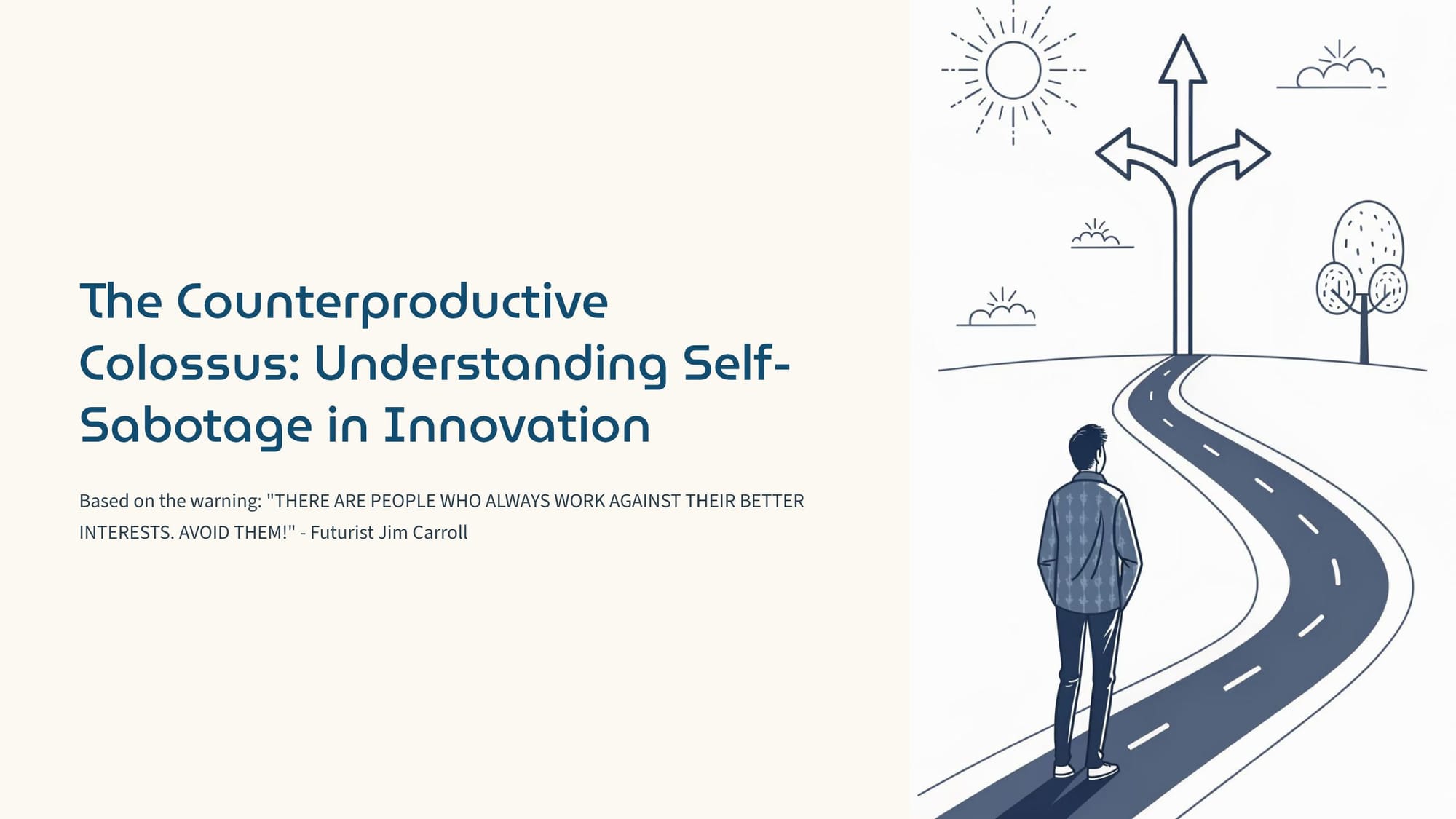
It includes an overview of the personality traits to avoid ....
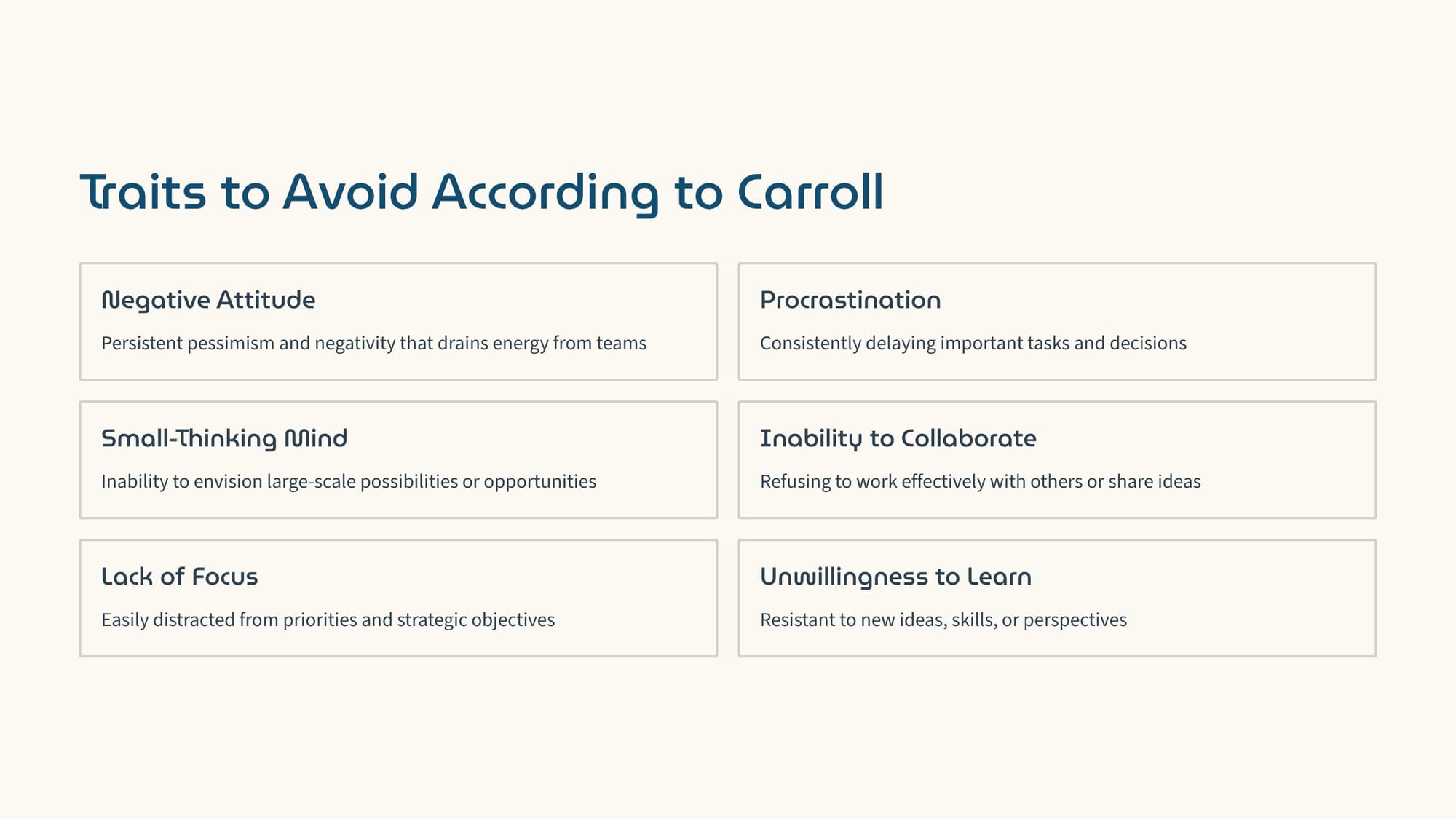
...the psychological drivers of self-sabotage...
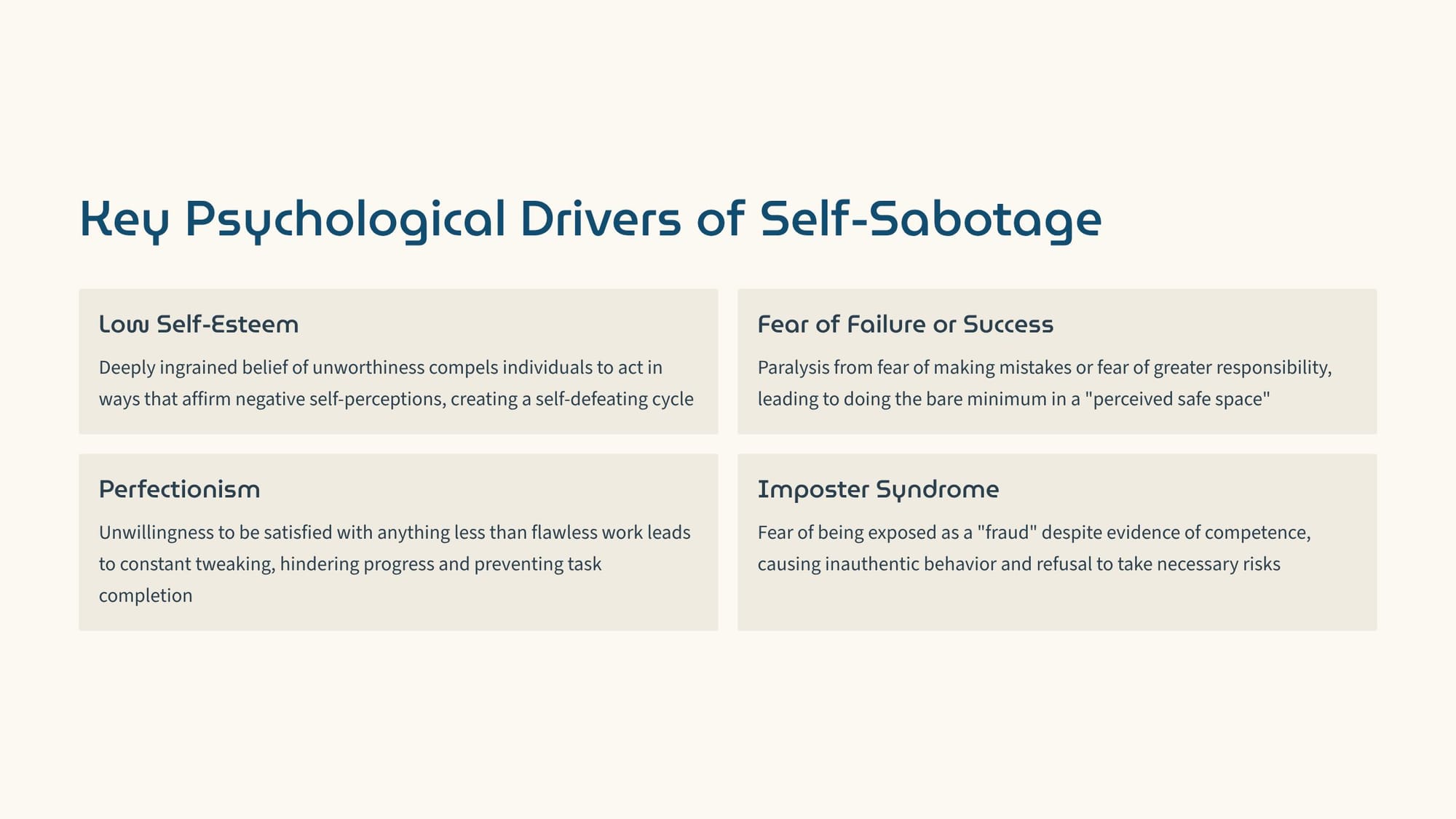
.... the self-sabotaging leader.....
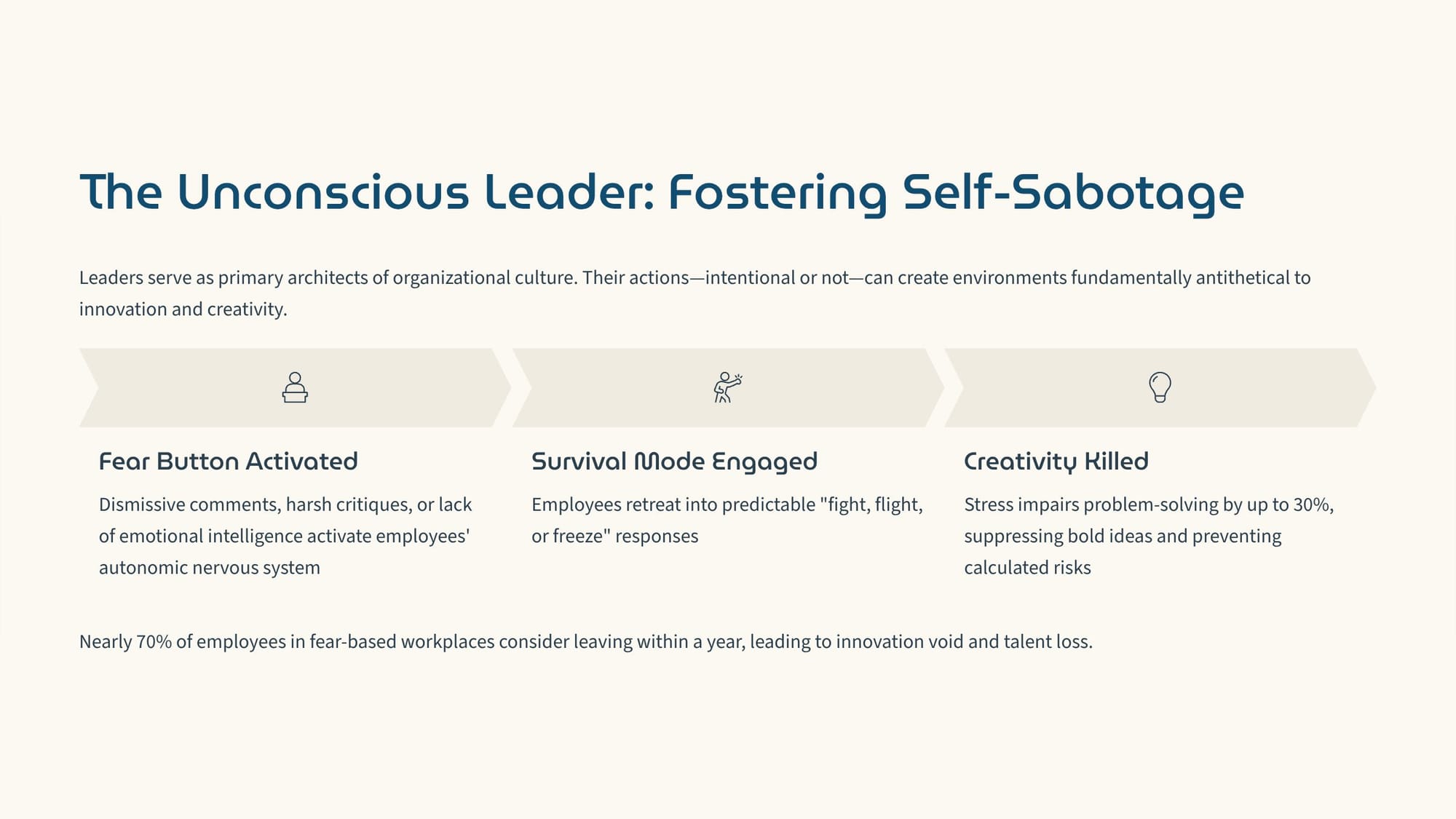
...and your 'pillars of resistance.'
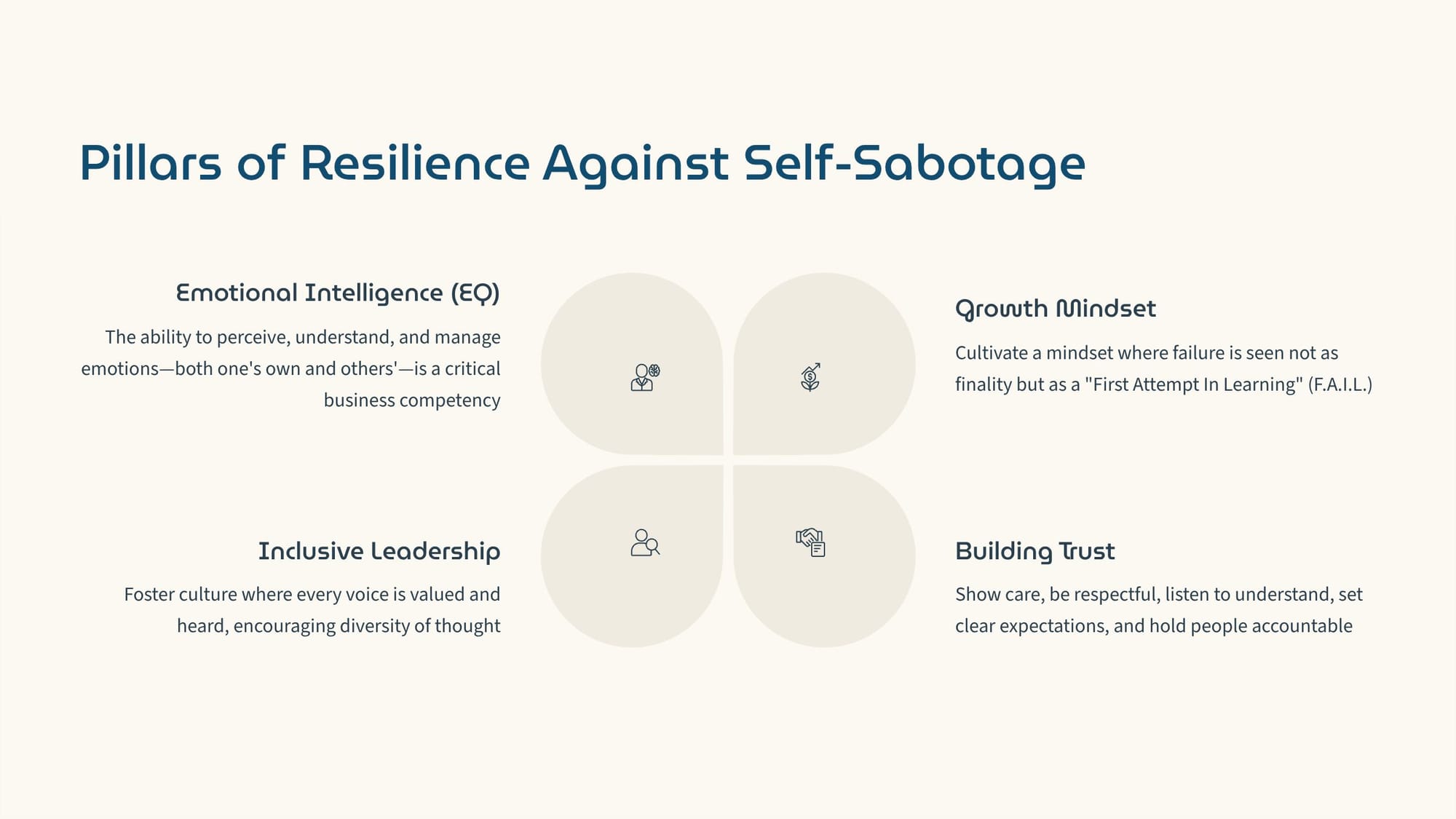
Look in the mirror first. Where are you working against your better interests? Procrastinating on something crucial? Staying quiet when you have game-changing ideas? Perfectionism-paralyzing yourself?
Then, examine your team and organization. What dynamics might be encouraging self-sabotage instead of breakthrough thinking? The counterproductive colossus is real, but it's not invincible. The future belongs to those brave enough to confront these internal obstacles and dare to innovate!
Futurist Jim Carroll has witnessed a lot of self-sabotage and can recognize it in an instant!

